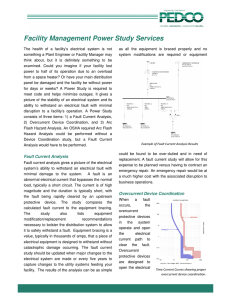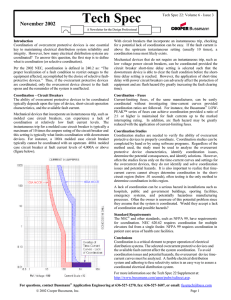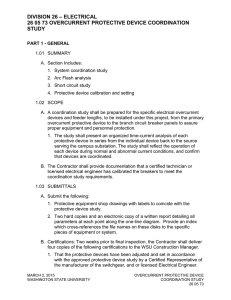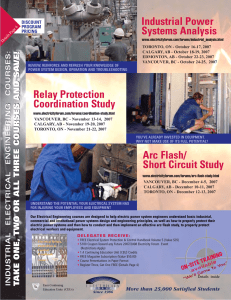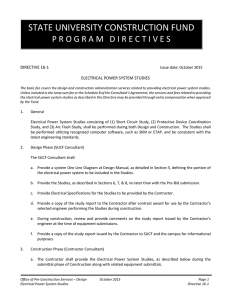Electrical Power System Studies Why Test? Series Short Circuit Studies
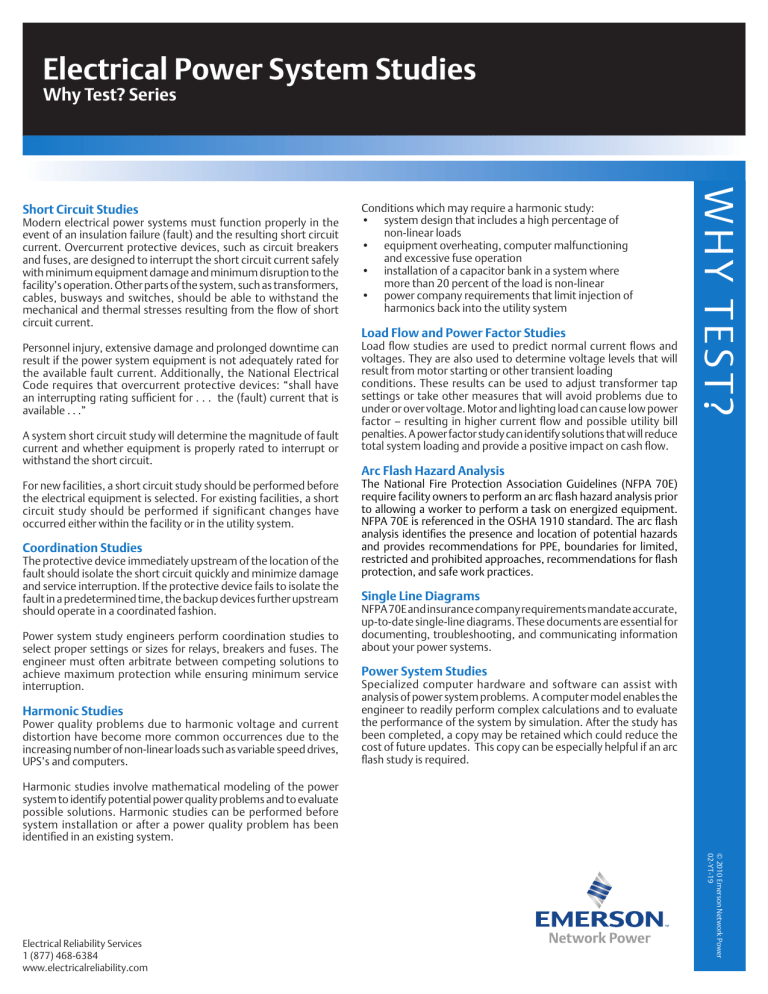
Electrical Power System Studies
Why Test? Series
Short Circuit Studies
Modern electrical power systems must function properly in the event of an insulation failure (fault) and the resulting short circuit current. Overcurrent protective devices, such as circuit breakers and fuses, are designed to interrupt the short circuit current safely with minimum equipment damage and minimum disruption to the facility’s operation. Other parts of the system, such as transformers, cables, busways and switches, should be able to withstand the mechanical and thermal stresses resulting from the flow of short circuit current.
Personnel injury, extensive damage and prolonged downtime can result if the power system equipment is not adequately rated for the available fault current. Additionally, the National Electrical
Code requires that overcurrent protective devices: “shall have an interrupting rating sufficient for . . . the (fault) current that is available . . .”
A system short circuit study will determine the magnitude of fault current and whether equipment is properly rated to interrupt or withstand the short circuit.
For new facilities, a short circuit study should be performed before the electrical equipment is selected. For existing facilities, a short circuit study should be performed if significant changes have occurred either within the facility or in the utility system.
Coordination Studies
The protective device immediately upstream of the location of the fault should isolate the short circuit quickly and minimize damage and service interruption. If the protective device fails to isolate the fault in a predetermined time, the backup devices further upstream should operate in a coordinated fashion.
Power system study engineers perform coordination studies to select proper settings or sizes for relays, breakers and fuses. The engineer must often arbitrate between competing solutions to achieve maximum protection while ensuring minimum service interruption.
Harmonic Studies
Power quality problems due to harmonic voltage and current distortion have become more common occurrences due to the increasing number of non-linear loads such as variable speed drives,
UPS’s and computers.
Harmonic studies involve mathematical modeling of the power system to identify potential power quality problems and to evaluate possible solutions. Harmonic studies can be performed before system installation or after a power quality problem has been identified in an existing system.
Conditions which may require a harmonic study:
• system design that includes a high percentage of non-linear loads
• equipment overheating, computer malfunctioning and excessive fuse operation
• installation of a capacitor bank in a system where more than 20 percent of the load is non-linear
• power company requirements that limit injection of harmonics back into the utility system
Load Flow and Power Factor Studies
Load flow studies are used to predict normal current flows and voltages. They are also used to determine voltage levels that will result from motor starting or other transient loading conditions. These results can be used to adjust transformer tap settings or take other measures that will avoid problems due to under or over voltage. Motor and lighting load can cause low power factor – resulting in higher current flow and possible utility bill penalties. A power factor study can identify solutions that will reduce total system loading and provide a positive impact on cash flow.
Arc Flash Hazard Analysis
The National Fire Protection Association Guidelines (NFPA 70E) require facility owners to perform an arc flash hazard analysis prior to allowing a worker to perform a task on energized equipment.
NFPA 70E is referenced in the OSHA 1910 standard. The arc flash analysis identifies the presence and location of potential hazards and provides recommendations for PPE, boundaries for limited, restricted and prohibited approaches, recommendations for flash protection, and safe work practices.
Single Line Diagrams
NFPA 70E and insurance company requirements mandate accurate, up-to-date single-line diagrams. These documents are essential for documenting, troubleshooting, and communicating information about your power systems.
Power System Studies
Specialized computer hardware and software can assist with analysis of power system problems. A computer model enables the engineer to readily perform complex calculations and to evaluate the performance of the system by simulation. After the study has been completed, a copy may be retained which could reduce the cost of future updates. This copy can be especially helpful if an arc flash study is required.
Electrical Reliability Services
1 (877) 468-6384 www.electricalreliability.com







